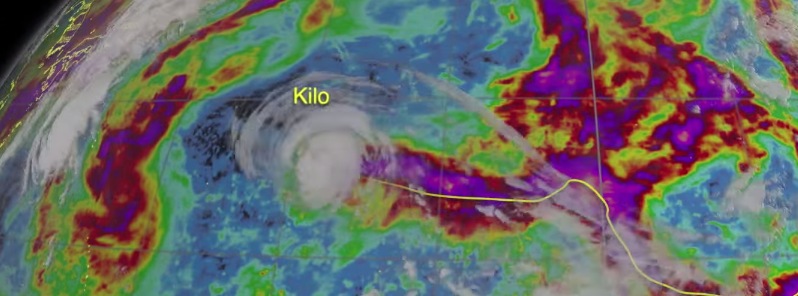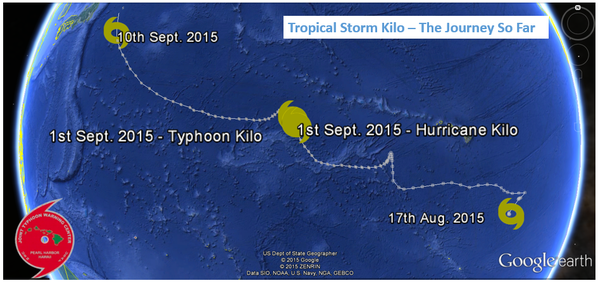GPM core satellite data on Typhoon “Kilo” over its 21 day life-span

Hurricane/Typhoon "Kilo" formed about 1 000 km (620 miles) southeast of Hawai'i Islands on August 20, 2015 and traveled 6 920 km (4 300 miles) across the Pacific basin before dissipating on September 10 near mainland Japan.
With its 21 day life-span, Kilo became one of the most long-lived tropical cyclones on record, and was observed in detail by Global Precipitation Measurement (GPM) mission's core satellite throughout its journey.

Tropical Storm "Kilo" path across the Pacific basin. Image credit: JTWC/Google Earth
Kilo first formed as a tropical depression about 1 127 km (700 miles) south-southeast of Hilo, Hawaii on August 20, 2015. About a week later the system intensified to a category 4 hurricane, west-southwest of the Hawai'i Islands and weakened to a remnant low on its journey toward the Kuril Islands and eastern Hokkaido, Japan, on September 10.
It crossed the International Date Line (IDL) in the period between September 1 and 2 when it officially changed from being a hurricane to a typhoon. Kilo was the 3rd named storm of the 2015 hurricane season to cross the IDL.

Video credit: NASA's Scientific Visualization Studio (SVS). Data provided by the joint NASA/JAXA GPM mission
The system persisted for 21 days, which is quite a rare life span for a tropical cyclone. Its entire journey, from the south of Hawaii to near the western Kuri Islands was 6 920 km (4 300 miles) long. For comparison, tropical cyclone of the longest life-span was Hurricane/Typhoon "John" which lasted for 30 days before falling apart on September 10, 1994, according to NOAA's Hurricane Research Division.


NASA's Scientific Visualization Studio Data provided by the joint NASA/JAXA GPM mission


NASA's Scientific Visualization Studio Data provided by the joint NASA/JAXA GPM mission
Featured image: NASA's GPM tracking Kilo from hurricane to a typhoon, September 17, 2015. Image credit: NASA SVS/JAXA GPM.

Commenting rules and guidelines
We value the thoughts and opinions of our readers and welcome healthy discussions on our website. In order to maintain a respectful and positive community, we ask that all commenters follow these rules.